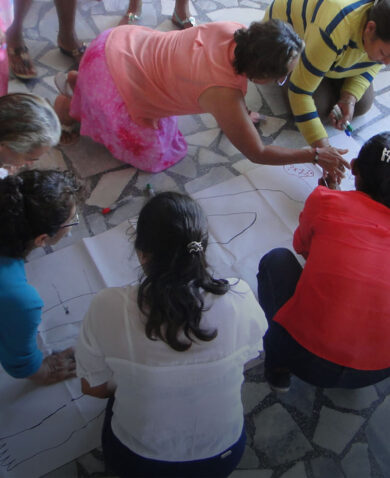
How to Design Social and Behavior Change Communications for Countering Violent Extremism: A Multi-Sectoral Approach
December 26, 2018 | 2 Minute ReadCase studies show that social and behavior change communications (SBCC) works across sectors. Building on this evidence, SBCC offers a promising solution for countering violent extremism.
This post originally appeared in the Council of International Development Companies’ (CIDC) Thought Leadership Compendium.
Violent extremism’s threat to democracy and citizens’ security is growing and changing faster than domestic and international constituencies’ ability to contain it. Countering violent extremism (CVE) experts are urgently searching for effective means to prevent more people from embracing violent extremism and to prompt current violent extremists to abandon their efforts. Messaging and media are frequently cited as tools used to address CVE, but not much empirical evidence shows what type of messaging and media accomplish the behavioral and systemic changes needed for CVE. Based on the limited data on social and behavior change communication (SBCC) in CVE programming and proven best practices from other disciplines, including health, education, neuroscience, and youth programming, we propose SBCC as a promising CVE methodology and offer key principles for designing, implementing, and assessing this technical approach.
What is SBCC and Why is it Important to CVE?
SBCC is a research-based, consultative, participatory process that uses communication to facilitate social and behavior change required to improve specific outcomes, such as CVE. SBCC recognizes that individuals’ behavior depends on larger group, environmental, and structural systems and norms (e.g., gender, cultural, and communal), and aims to incite change throughout those levels using three main elements: 1) communication using messages, materials, and interventions that fit the population’s needs and preferences; 2) behavior change through efforts to make specific actions easier, feasible, and closer to an ideal that will prevent violent extremism; and 3) social change to achieve shifts in participation and engagement, policies, and gender norms and relationships.
Given that SBCC draws on neuroscientific considerations of what drives human behavior, it serves as a promising approach to CVE. SBCC capitalizes on target populations’ familiarity with technology-driven messaging approaches used by violent extremist groups yet broadens the scope to include person-to-person and community interventions to achieve long-term social and behavior changes.
Based on research findings, we have identified the following SBCC interventions used in the CVE space… Read the full article in CIDC’s Thought Leadership Compendium.
Blog posts on the Chemonics blog represent the views of the authors and do not necessarily represent the views of Chemonics.






















